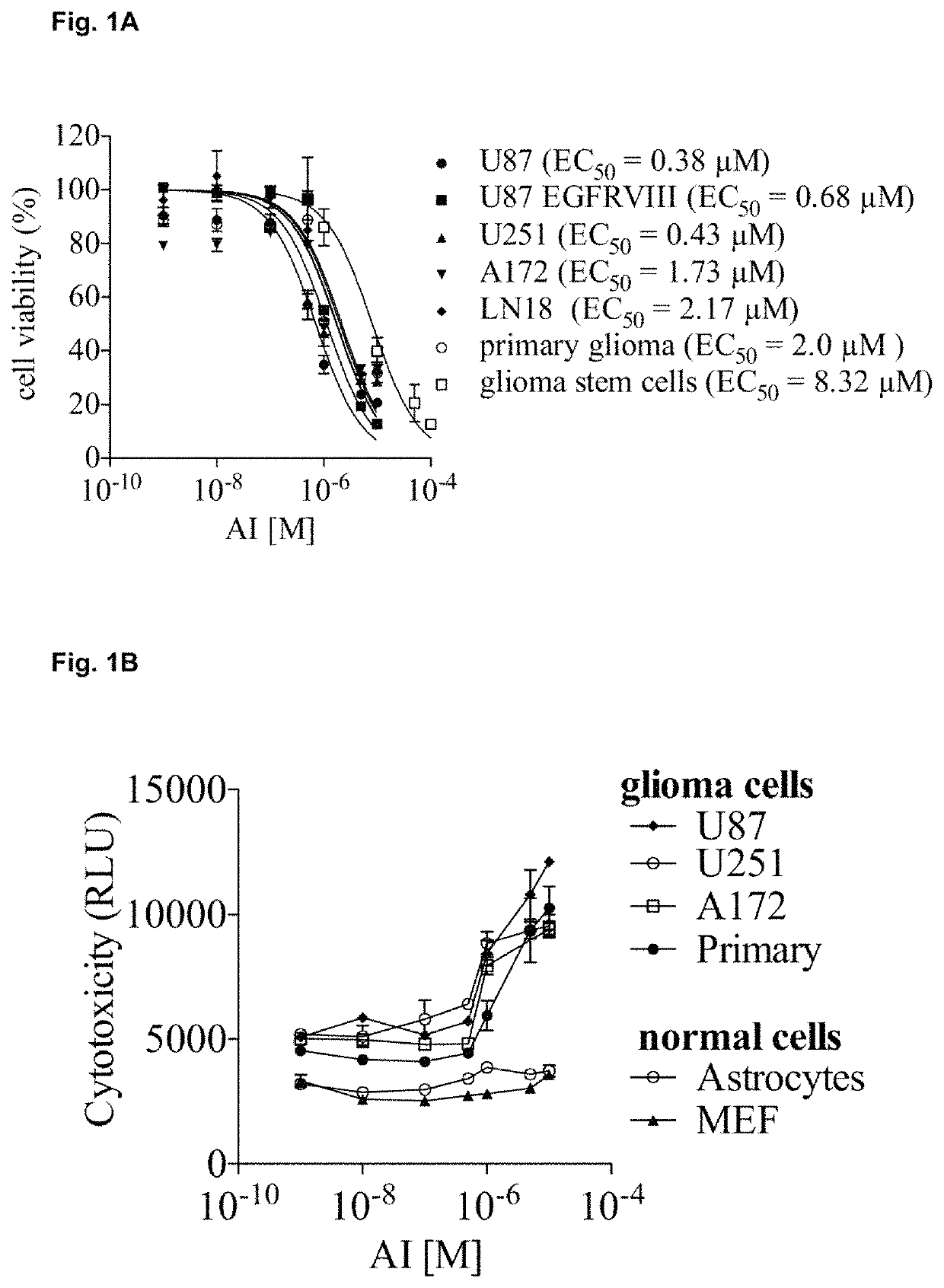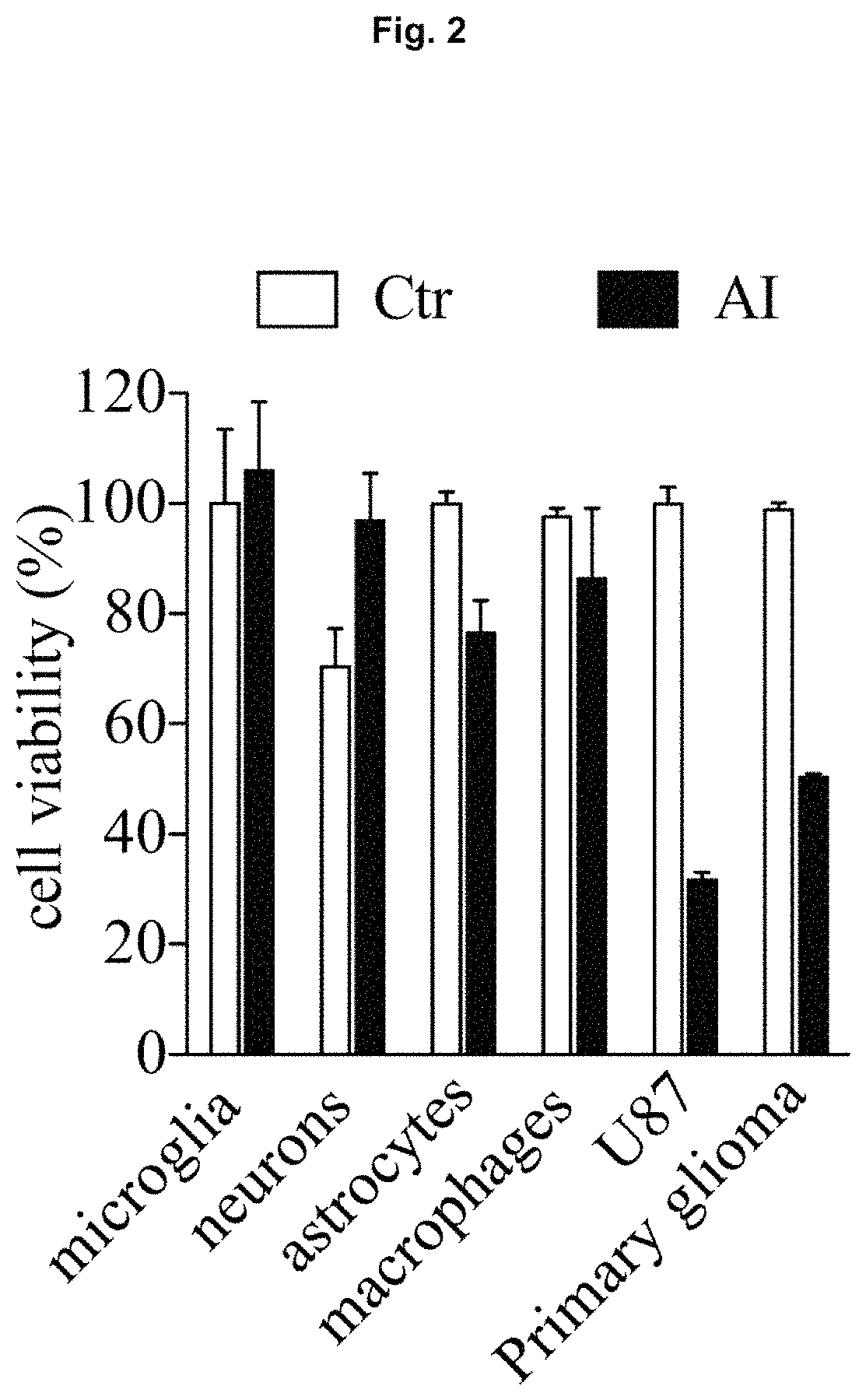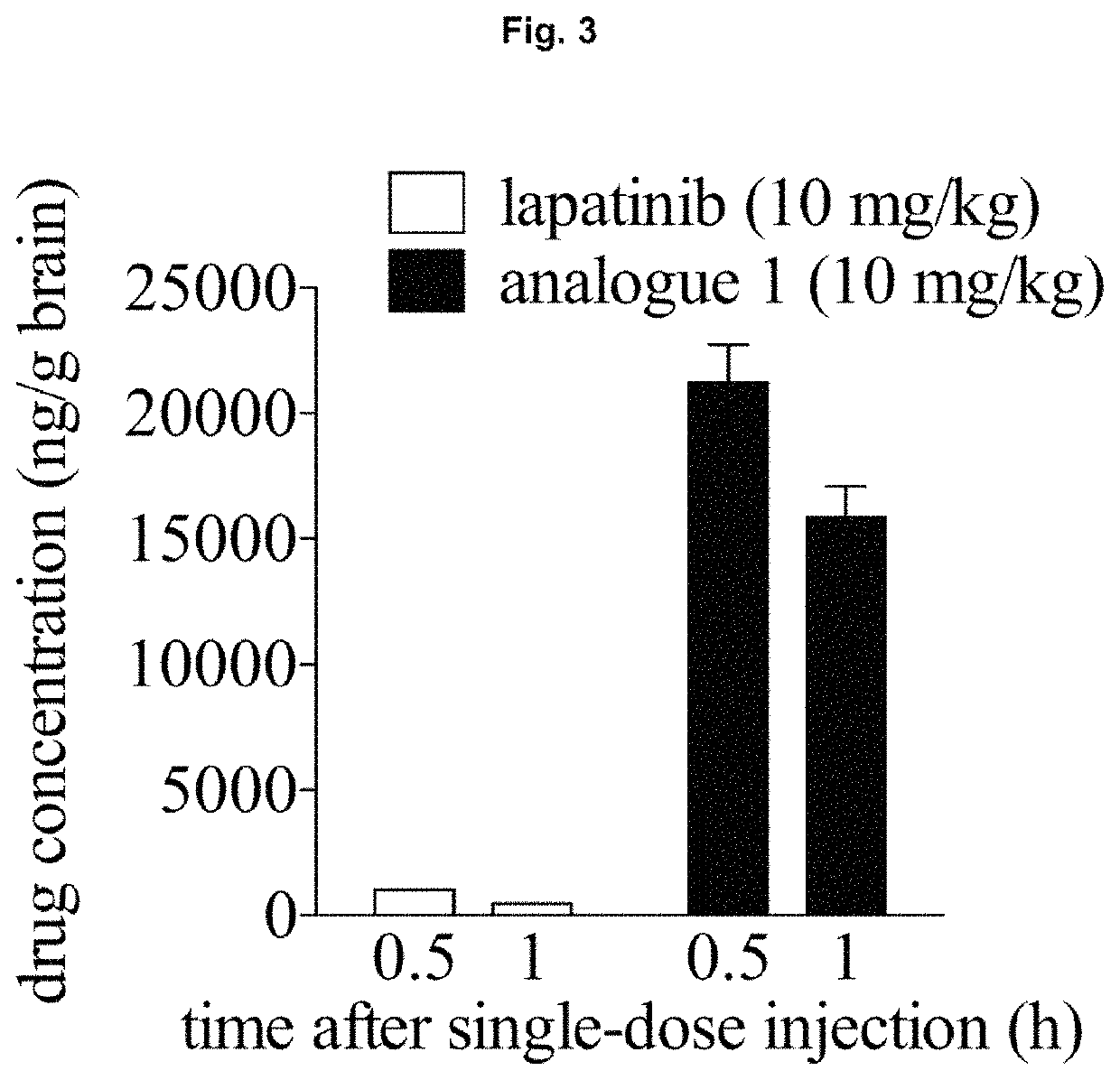Anti-cancer compounds
a technology of anti-cancer compounds and compounds, applied in the field of anti-cancer compounds, can solve the problems of insufficient blood-brain barrier (bbb) permeability of inhibitors, clinically available egfr inhibitors have failed in glioblastoma clinical trials, and little improvement in survival
- Summary
- Abstract
- Description
- Claims
- Application Information
AI Technical Summary
Benefits of technology
Problems solved by technology
Method used
Image
Examples
examples
[0165]All chemicals were obtained from Sigma-Aldrich (St. Louis, Mo., USA), except for boronic acids that were purchased from Frontiers Scientific (Logan, Utah, USA). Microwave irradiation was carried out using the CEM-Discover microwave reactor (Kamp-Lintfort, Germany). 1H-NMR spectra were obtained on a BRUKER “Avance 300” 300 MHz NMR spectrometer (Bruker Corp., Billerica, Mass., USA). d6-DMSO or CDCl3 were obtained from Cambridge Isotope Laboratories. High performance liquid chromatography was conducted on an Agilent series 1200 LC system with an Agilent 1260 Infinity binary pump and integrated vacuum degasser, autosampler and diode array detector (Agilent Technologies, Santa Clara, Calif., USA). The samples were analyzed on an Agilent C18 column (particle size: 5 μM, 150×4.6 mm internal diameter) using an acetonitrile:water gradient of 0 to 100% over 40 min and at a flow rate of 0.2 mL / min. A sample of elution was analysed using the Agilent 6120 quadrupole mass spectrometer. Agil...
PUM
| Property | Measurement | Unit |
|---|---|---|
| enantiomeric excess | aaaaa | aaaaa |
| enantiomeric excess | aaaaa | aaaaa |
| enantiomeric excess | aaaaa | aaaaa |
Abstract
Description
Claims
Application Information
 Login to View More
Login to View More - R&D
- Intellectual Property
- Life Sciences
- Materials
- Tech Scout
- Unparalleled Data Quality
- Higher Quality Content
- 60% Fewer Hallucinations
Browse by: Latest US Patents, China's latest patents, Technical Efficacy Thesaurus, Application Domain, Technology Topic, Popular Technical Reports.
© 2025 PatSnap. All rights reserved.Legal|Privacy policy|Modern Slavery Act Transparency Statement|Sitemap|About US| Contact US: help@patsnap.com



